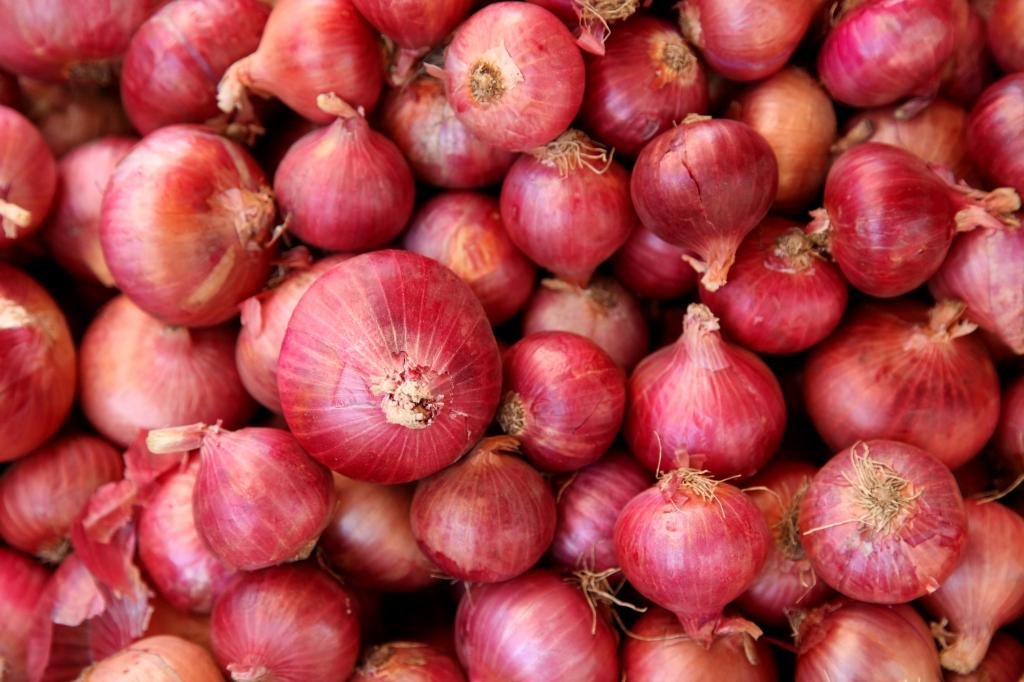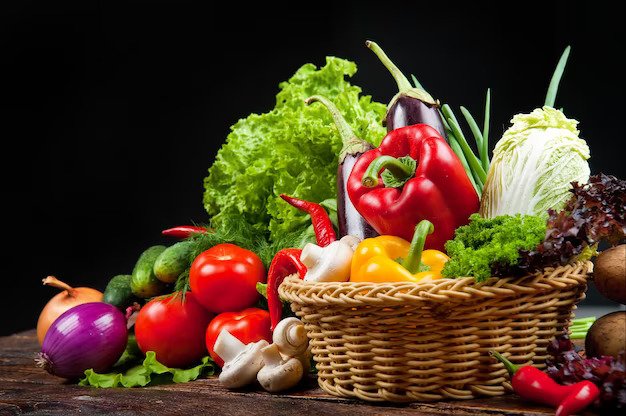Fresh Vegetable
1. Red Onion

Indian red onion, a staple in global cuisine, is renowned for its vibrant color, pungent flavor, and versatility. Grown primarily in states like Maharashtra, Gujarat, and Karnataka, it thrives in well-drained, loamy soils under warm climates.
These onions are smaller than yellow or white varieties, with a sharp, spicy taste ideal for raw consumption in salads, salsas, or garnishes. Rich in antioxidants, vitamins C and B6, and sulfur compounds, they offer health benefits like improved immunity and heart health. India is the second-largest onion producer globally, with red onions dominating exports due to their long shelf life and robust flavor. Major export destinations include Southeast Asia, the Middle East, and Europe. However, price volatility and export bans, like those in 2023, often impact global supply chains, affecting farmers and markets
These onions are smaller than yellow or white varieties, with a sharp, spicy taste ideal for raw consumption in salads, salsas, or garnishes. Rich in antioxidants, vitamins C and B6, and sulfur compounds, they offer health benefits like improved immunity and heart health. India is the second-largest onion producer globally, with red onions dominating exports due to their long shelf life and robust flavor. Major export destinations include Southeast Asia, the Middle East, and Europe. However, price volatility and export bans, like those in 2023, often impact global supply chains, affecting farmers and markets
2. Fresh Mix Vegetable

Fresh mixed vegetables, a vibrant medley of seasonal produce, are a cornerstone of Indian cuisine and global diets. Typically including carrots, beans, peas, cauliflower, and bell peppers, these mixes offer a balance of flavors, textures, and nutrients. Grown across India’s fertile regions like Punjab, Uttar Pradesh, and Maharashtra, they thrive in diverse climates. Packed with vitamins A, C, K, fiber, and antioxidants, they support immunity, digestion, and heart health. In Indian households, mixed vegetables are stir-fried with spices, added to curries, or used in pulao, showcasing their versatility. Available year-round in markets, they’re often sold pre-chopped for convenience, though freshness is key for optimal taste. Their affordability and nutritional density make them a dietary staple, while sustainable farming practices ensure their availability for healthy, colorful meals worldwide